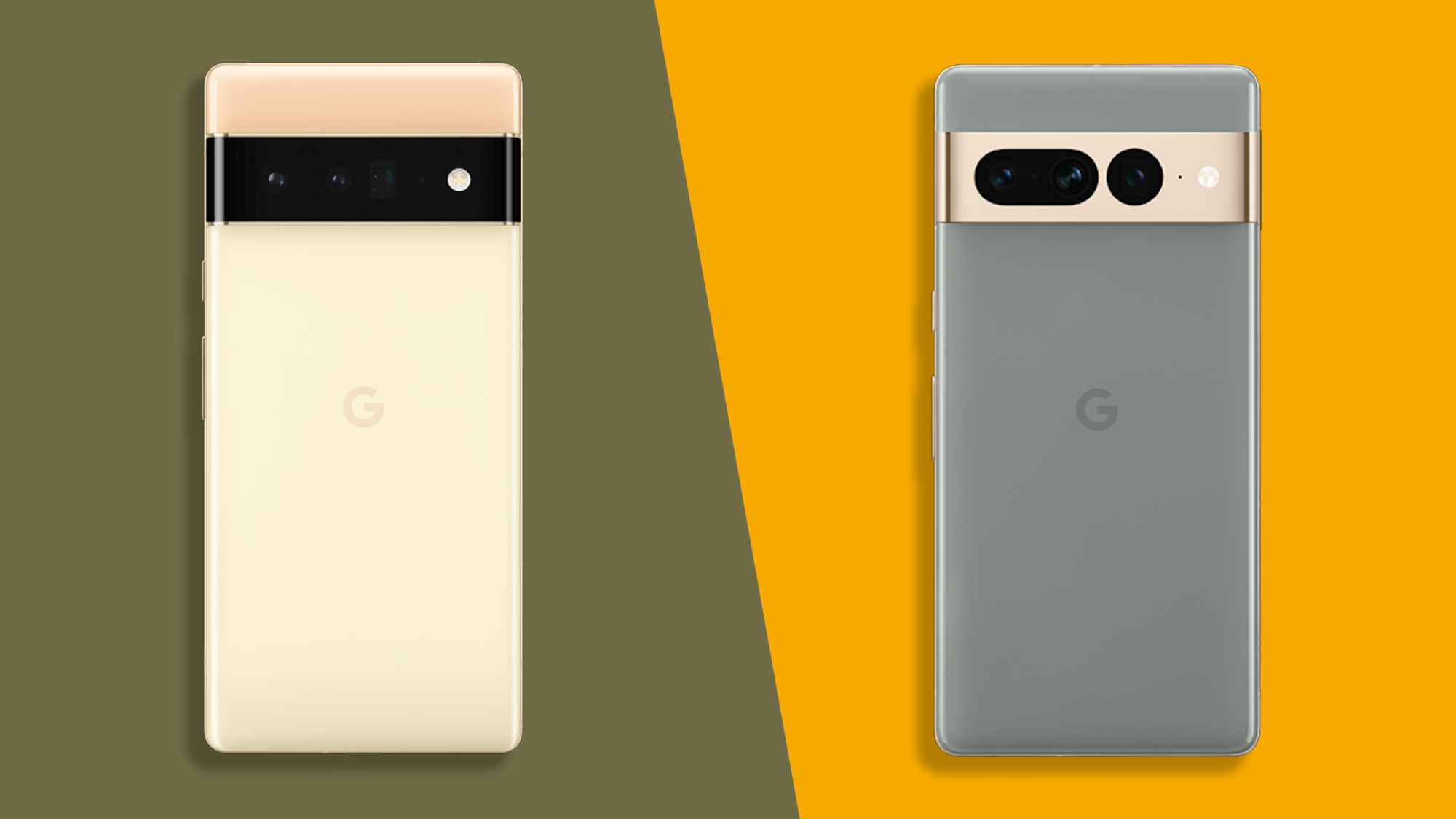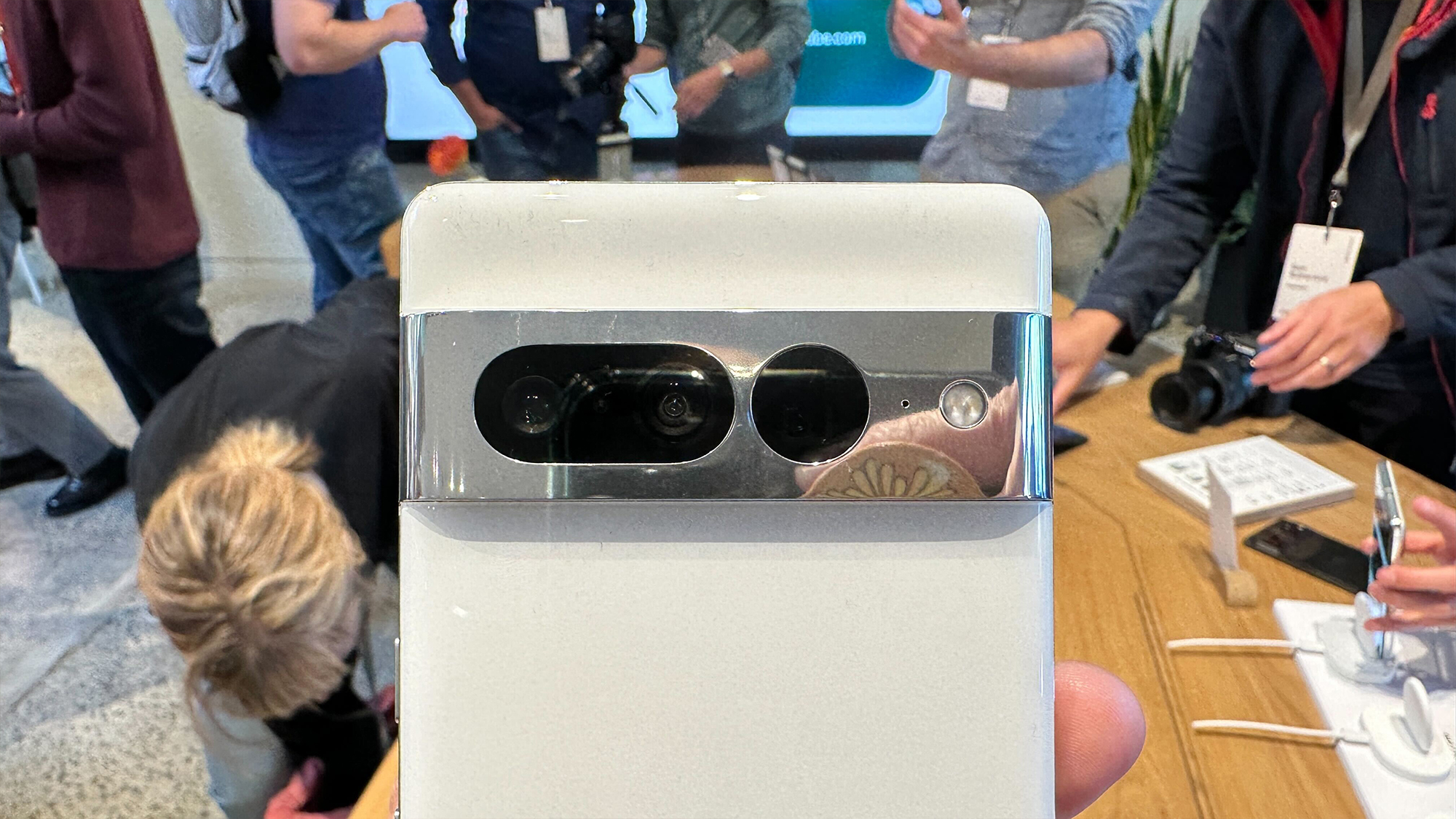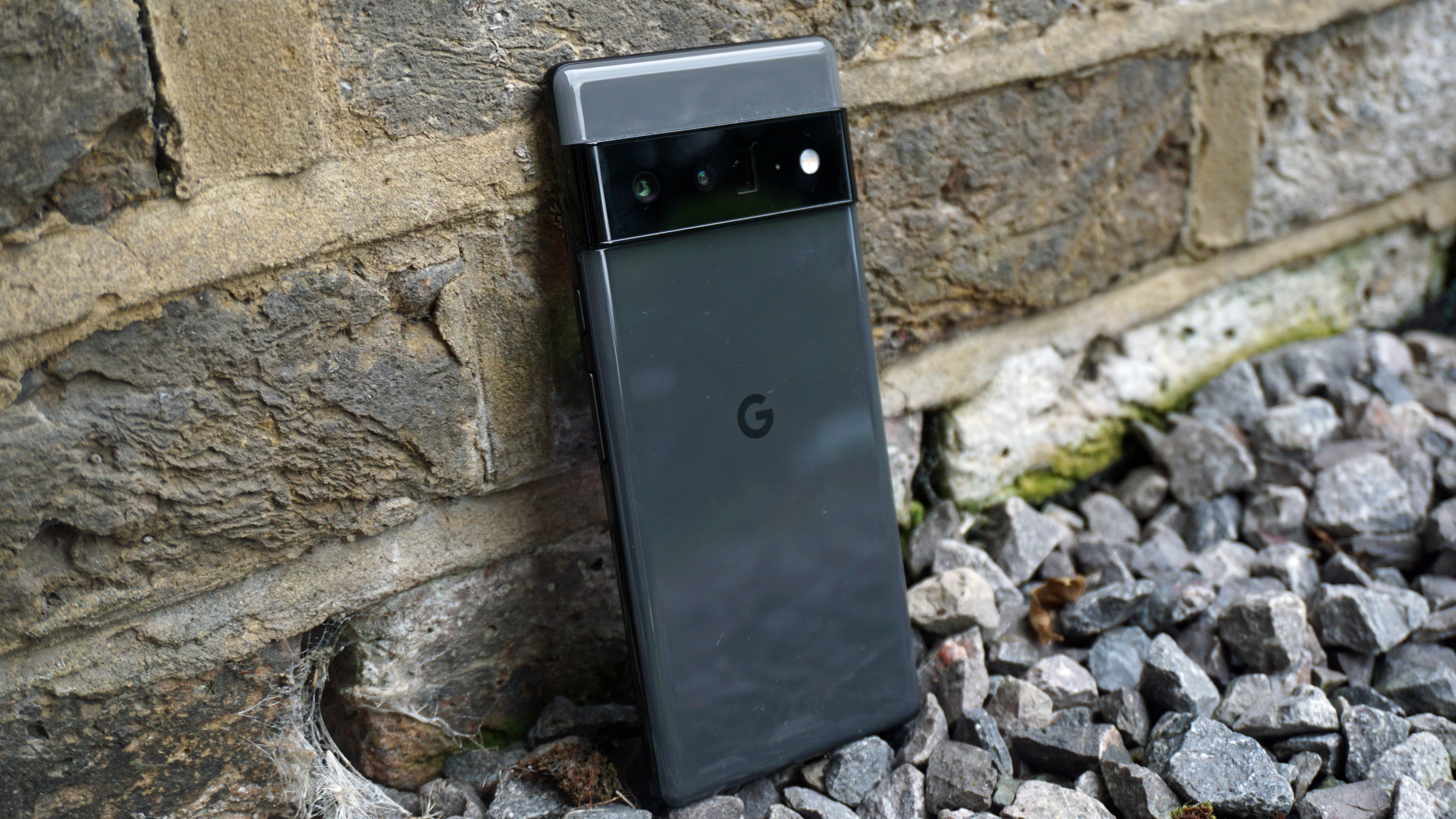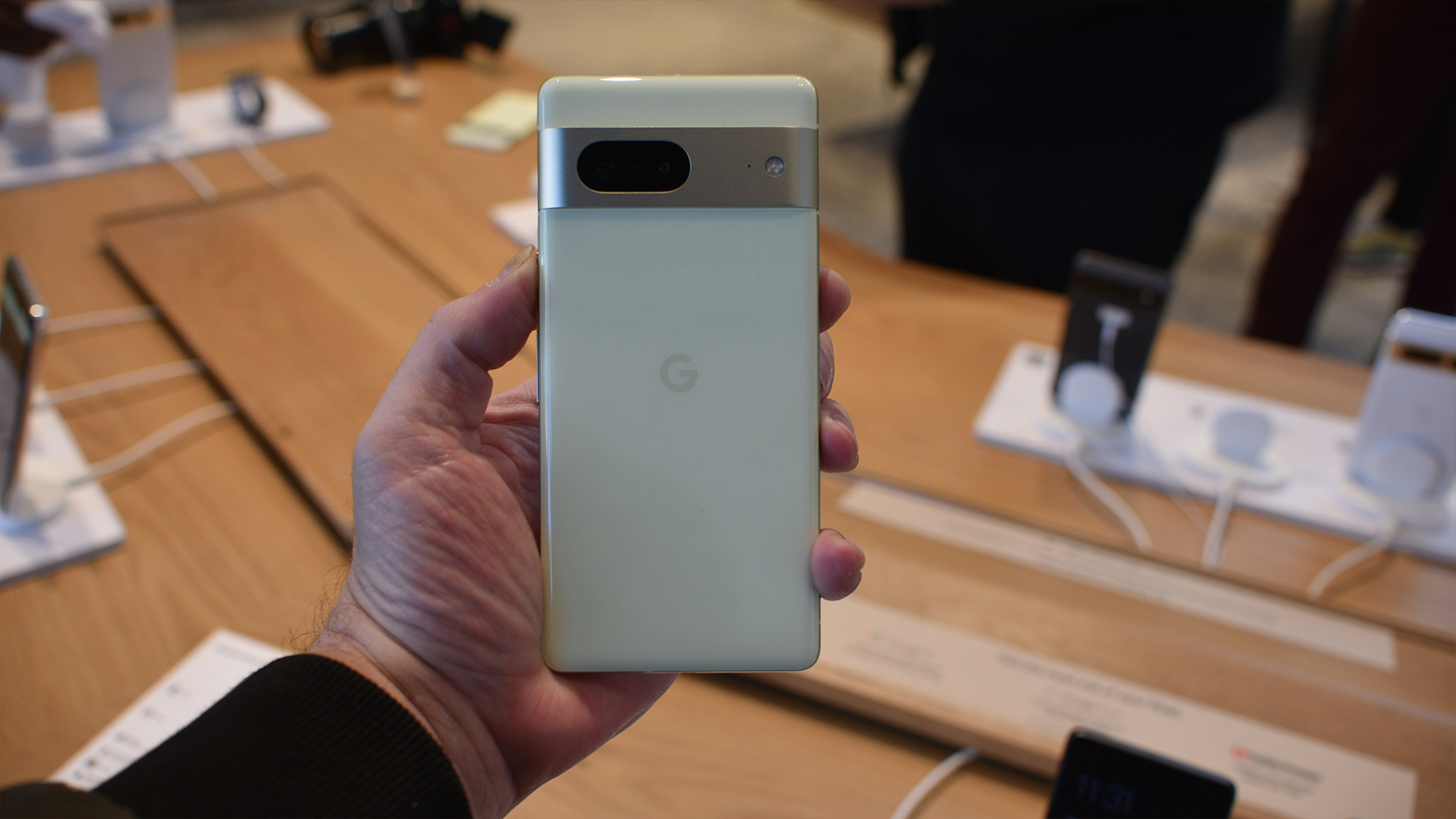Google Pixel 6 Pro vs Pixel 7 Pro: A successful refinement?

We called 2021’s Google Pixel 6 Pro “the first top-tier Google Pixel phone” in our four-star review, praising it for its beautiful screen, top-tier camera, and clean software.
How does Google follow that up? With the Pixel 7 Pro, of course.
Featuring subtle refinements across the board, Google evidently isn’t reinventing the wheel here. After a year of pure innovation, however, has the tech giant managed to turn out a genuinely top-class flagship phone?
Here's how things stack up in this Pixel-on-Pixel battle.
Pixel 6 Pro vs Pixel 7 Pro price and availability

The Pixel 6 Pro was announced on October 19, 2021, and hit shops on October 28 of the same year. Prices started from $899 / £849 / AU$1,299 for the 128GB model.
The Pixel 7 Pro was announced on October 6, 2022, with availability set for October 13. Prices start from $899 / £849 / AU$1,299 for the 128GB model, while the 256GB version costs $999 / £949 / AU$1,449. Customers in the US and Australia can also get their hands on a larger 512GB model for $1,099 / AU$1,599.
At the time of writing, now that the Pixel 7 Pro is here, you can still buy the Pixel 6 Pro directly from Google, but only the 128GB model remains available and there's no apparent price drop, meaning if you'd rather 2021's Pro, look beyond Google's own store.
Sign up for breaking news, reviews, opinion, top tech deals, and more.
Pixel 6 Pro vs Pixel 7 Pro design

The Pixel 7 Pro essentially sees Google taking another pass at the Pixel 6 Pro’s design blueprints, with only minimal edits. That’s not a problem in itself, as the Pixel 6 Pro continues to look quite unlike any non-Google-branded phone on the market.
Both of these Pixel phones are defined by a width-spanning camera visor, but whereas the Pixel 6 Pro module presents as black glass, the Pixel 7 Pro’s is a more premium and aesthetically consistent aluminum, that appears completely of a piece with the frame.
Google has dropped the two-tone color scheme for the Pixel 7 Pro, which some will be disappointed by. While the Pixel 6 Pro design had its detractors, we admired its boldness.
Also gone is the Pixel 6 Pro’s bold Sorta Sunny colorway, but in its place is the decidedly classy Hazel. This greeny-grey color is complemented by a goldish metal frame and camera module, and the effect is gorgeous. Snow (white) and Obsidian Black options track more closely with the Pixel 6 Pro’s Cloudy White and Stormy Black.
At 162.9 x 76.55 x 8.9mm and 212g, there’s really very little between the Pixel 7 Pro and its predecessor when it comes to size. The Pixel 6 Pro clocks in at 163.9 x 75.9 x 8.9mm and 210g, so we’re only talking about fractional differences and a couple of grams.
Both phones are IP68 certified, so they’re equally water and dust-resistant too.
Pixel 6 Pro vs Pixel 7 Pro display

From what we can tell, the Pixel 7 Pro has much the same display as the Pixel 6 Pro. Both are 6.7-inch QHD+ OLEDs with 120Hz adaptive (down to 10Hz) refresh rates.
We found the Pixel 6 Pro's screen to be one of the sharpest-looking displays of 2021, so we have no complaint over Google sticking to the script. However, the Pixel 7 Pro screen can attain a 25% higher peak brightness to the tune of 1500 nits, meaning better outdoor visibility.
Not that the Pixel 6 Pro struggles in this department. In our review, we stated that “The screen is capable of impressive brightness levels, and we didn’t struggle to see the phone’s screen in bright sunlight”. Still, any progress is always welcome.
All in all, it looks as if Google has slightly improved what was one of the best smartphone displays on the market. And we’re OK with that.
Pixel 6 Pro vs Pixel 7 Pro camera

At first glance, these are two nigh-on identical camera systems, but there are differences when you look a little closer. Besides, the Pixel 6 Pro continues to be one of the best camera phones on the market, so wholesale changes were unnecessary.
Both phones give you a 50MP main camera sensor, a 12MP ultra-wide sensor, and a 48MP telephoto sensor. There’s little difference when it comes to those first two cameras, except for a slightly wider 125-degree FOV on the Pixel 7 Pro’s ultra-wide compared to the Pixel 6 Pro’s 114-degree equivalent and additional autofocus functionality on the ultra-wide allowing for a new Macro Focus mode on the 7 Pro.
There’s more of a difference in the telephoto stakes, with the Pixel 7 Pro packing a 5x optical zoom lens compared to the Pixel 6 Pro’s 4x zoom. In fact, the newer phone can zoom right up to 30x via digital zoom, whereas the Pixel 6 Pro stops at 20x.
Google claims to be able to achieve sharper digitally-zoomed shots in the Pixel 7 Pro with its machine learning upscaler, while OIS (optical image stabilization) is employed to keep the subject in-frame at extreme distance.
The main difference here comes courtesy the Pixel 7 Pro’s new Tensor G2 chip, which supposedly supplies Google’s best photo and video quality yet. It also enables the newer phone to shoot Night Sight shots twice as quickly as the Pixel 6 Pro.
Other improvements in the Pixel 7 Pro include 10-bit HDR, improved stabilization, and so-called ‘Speech enhancement’. The latter lets you choose which audio to focus on when shooting videos.
Google has fitted the Pixel 7 Pro with a new 10.8MP selfie camera, whereas the Pixel 6 Pro has an 11.1MP front camera. Despite the drop in resolution, Google seems confident you'll get better selfies overall, particularly in lower lighting conditions.
Pixel 6 Pro vs Pixel 7 Pro specs and performance

We’ve already mentioned that the Pixel 7 Pro runs on Google’s new Tensor G2 processor, which represents a generational bump over the Pixel 6 Pro’s original Tensor chip.
Google claims the new processor is easier on the battery, having been built to a more energy-efficient 4nm standard. The Tensor 'G1', by contrast, is a 5nm chip.
Google is concentrating on the Pixel 7 Pro’s increased abilities in image enhancement and machine learning tasks with Tensor G2. One of the additions on this front is Clear Calling, which promises to make the voice of the other person on a call clearer through AI.
Both Pixel Pro phones come with 12GB of RAM, so it should be all square on the app-switching front. Google uses the same Titan M2 security chip in the Pixel 7 Pro as it used in the Pixel 6 Pro, too, so both should be equally secure as well.
Neither phone is what we’d call impressive when it comes to internal storage provisions. Both supply 128GB and 256GB options (with 512GB in limited markets), while rivals Samsung and Apple now go up to 1TB.
Pixel 6 Pro vs Pixel 7 Pro battery

Google hasn’t changed its battery game up with the Pixel 7 Pro. It’s got the same 5,000mAh cell as the Pixel 6 Pro.
That alone is reason for concern, as we named battery life as “one of the weaker elements of the Pixel 6 Pro” in our review. Not to the extent that it was a huge problem, you understand, but it would struggle to make it through a day of heavy usage.
We’re hopeful that Google has addressed this in the Pixel 7 Pro, irrespective of the size of the cell. Google claims that its new flagship can hit 24 hours of usage in normal conditions, and up to 72 hours if you make full use of its Extreme Battery Saver mode.
The reason for this confidence comes down to that new Tensor G2 chip, which as we’ve already discussed, is more energy-efficient than the Pixel 6 Pro’s Tensor G1.
Both phones support wired and wireless charging. There was a minor controversy last year when Google gave the impression that the Pixel 6 Pro supported 30W charging, when in fact it only extended to 23W, and while the company hasn't explicitly said, the figures suggest the 7 Pro isn't charging any faster, which is a shame.
Takeaway
After the bold reset that was the Pixel 6 Pro, it’s understandable that Google is taking smaller steps forward with the Pixel 7 Pro. It looks very similar, has much the same (if not quite an identical) camera system and display, and doesn’t appear to be significantly faster.
However, there have been some subtle improvements in each of those aforementioned areas; together with claims of extended battery life. The question is, do all of these minor tweaks add up to a significantly better phone?
It looks like another strong flagship contender from the big G but at the same time, existing Pixel 6 Pro users can probably rest easy that their phone isn’t going to be rendered obsolete after less than a year on the market.

Jon is a freelance journalist who has been covering tech since the dawn of the smartphone era. Besides TechRadar, his words and pictures have appeared in The Telegraph, ShortList, Tech Advisor, Trusted Reviews, Expert Reviews, and more. He largely covers consumer technology, with a particular focus on smartphones and tablets. However, he's also been known to dabble in the worlds of entertainment and video games.